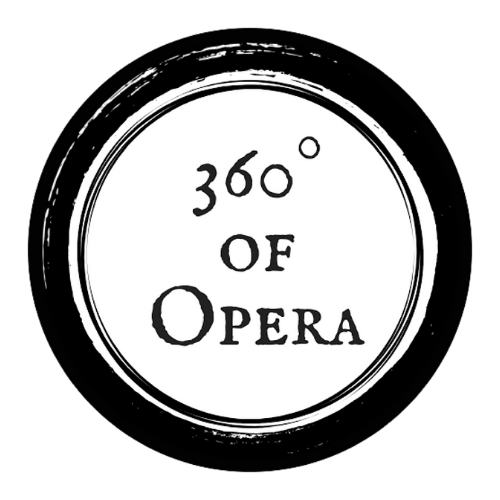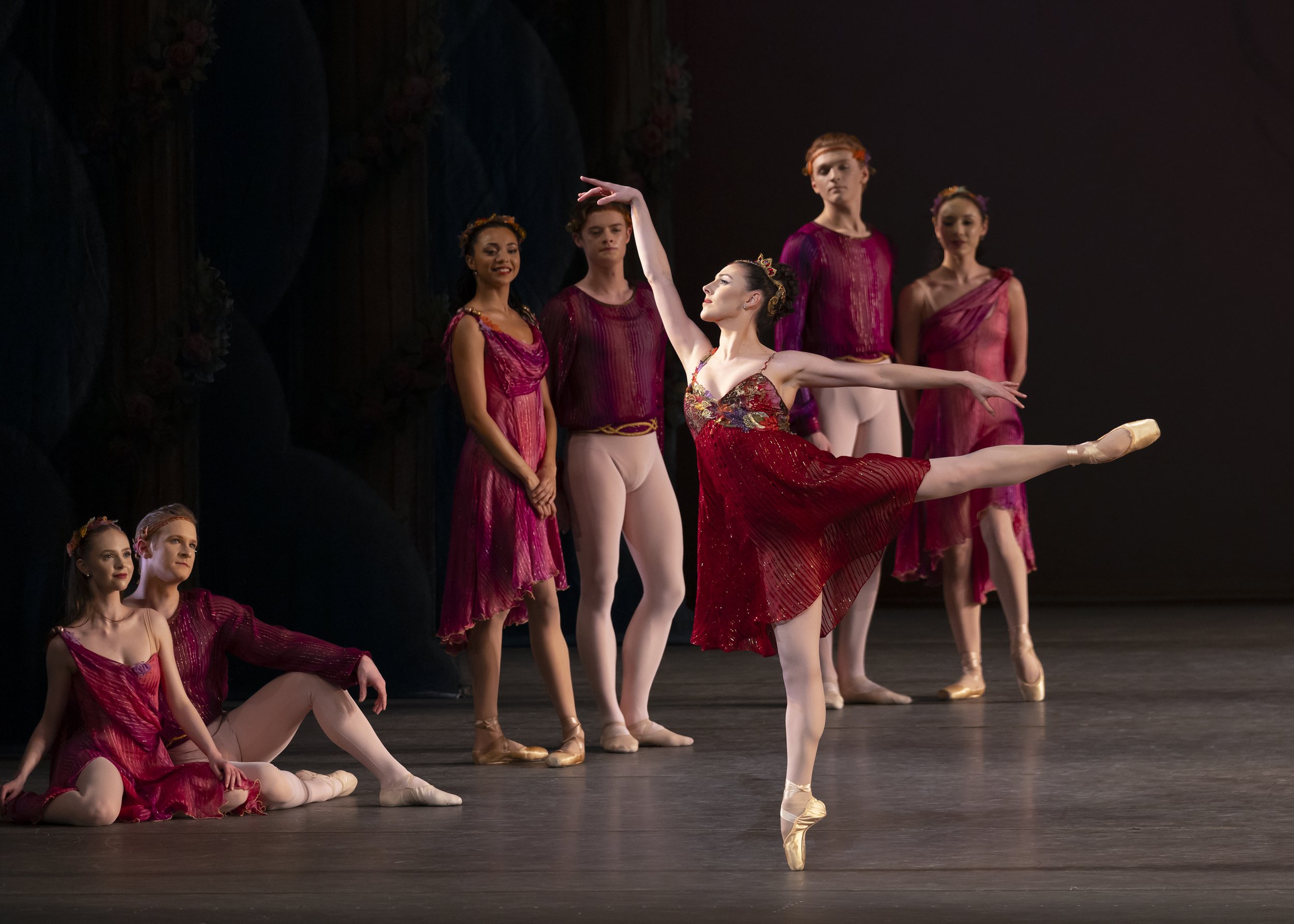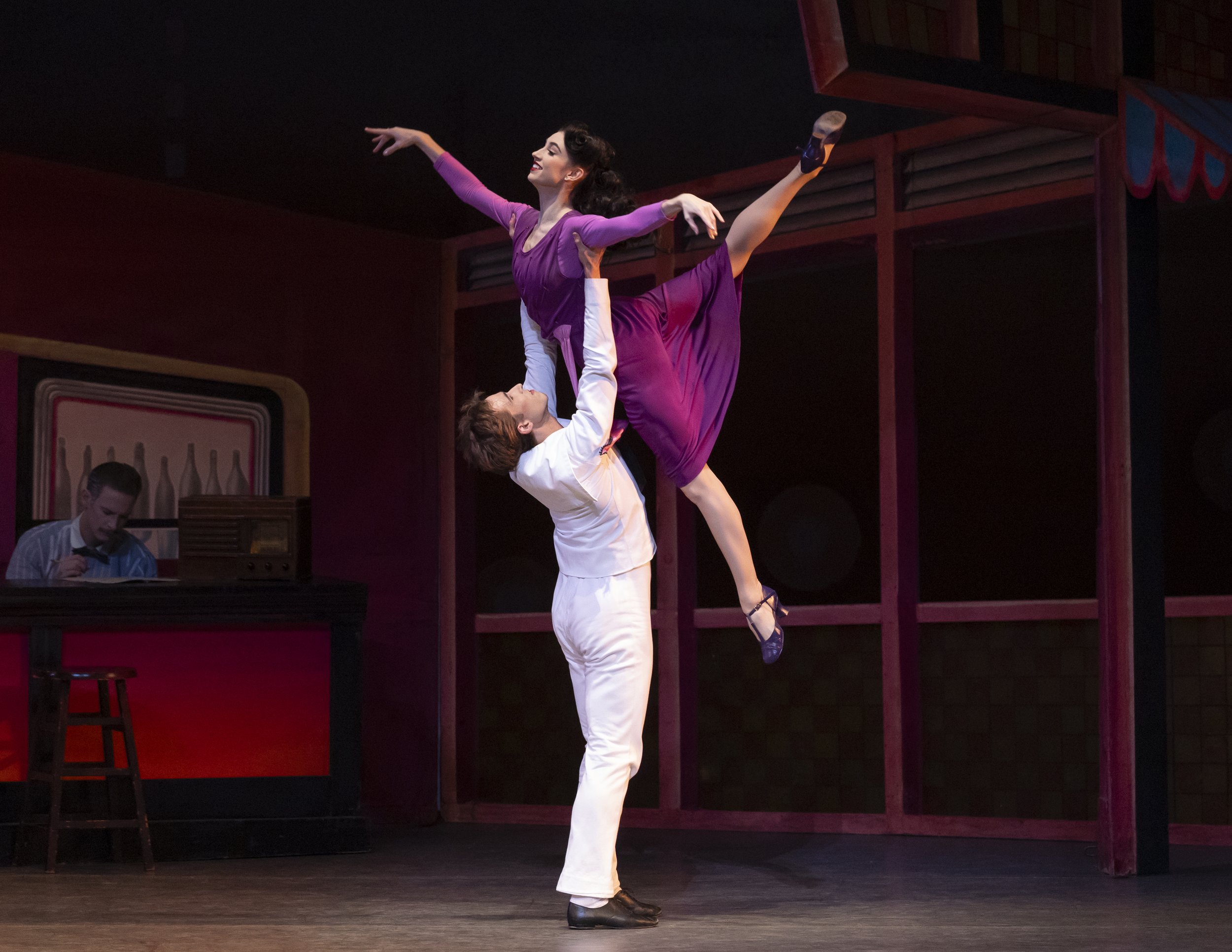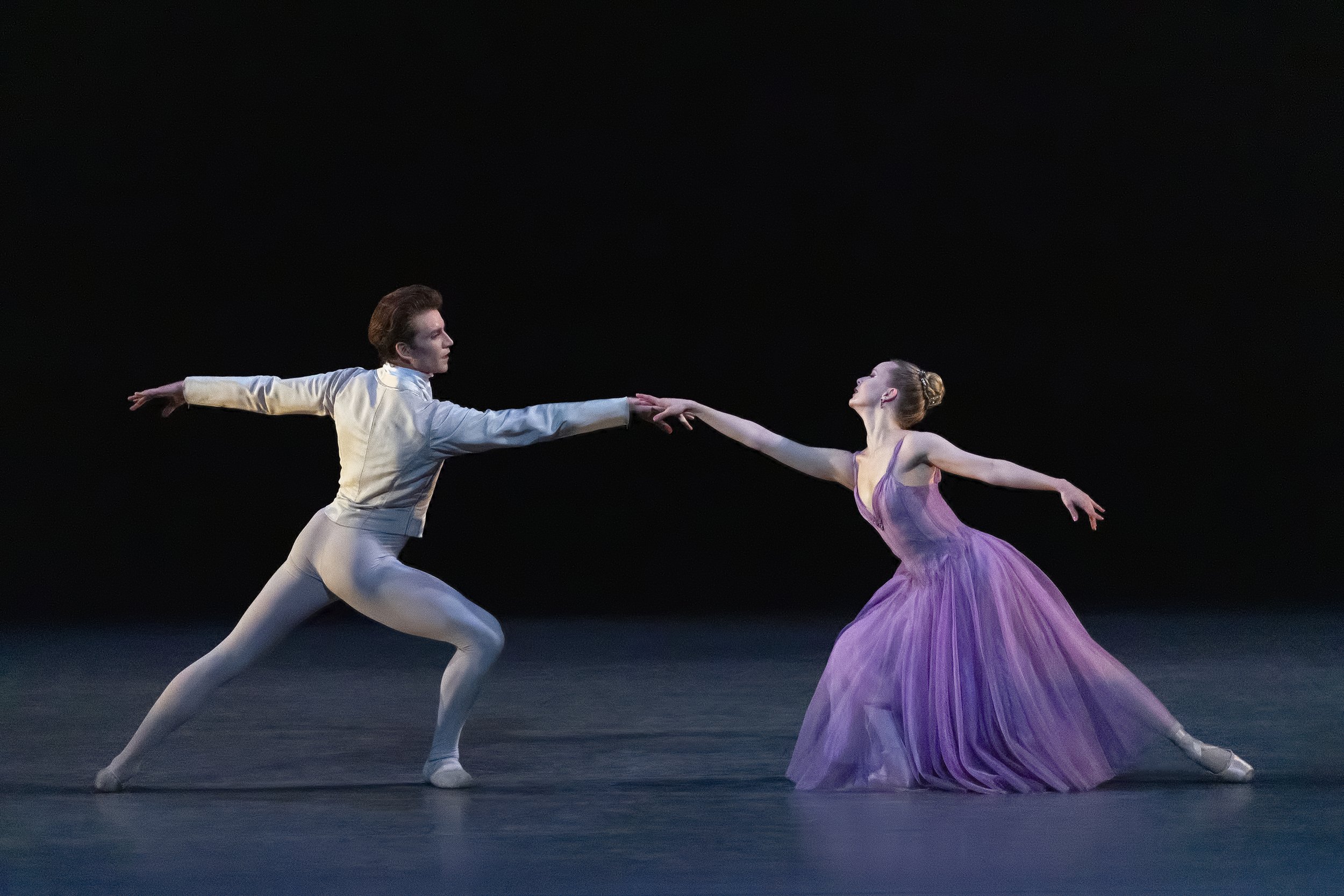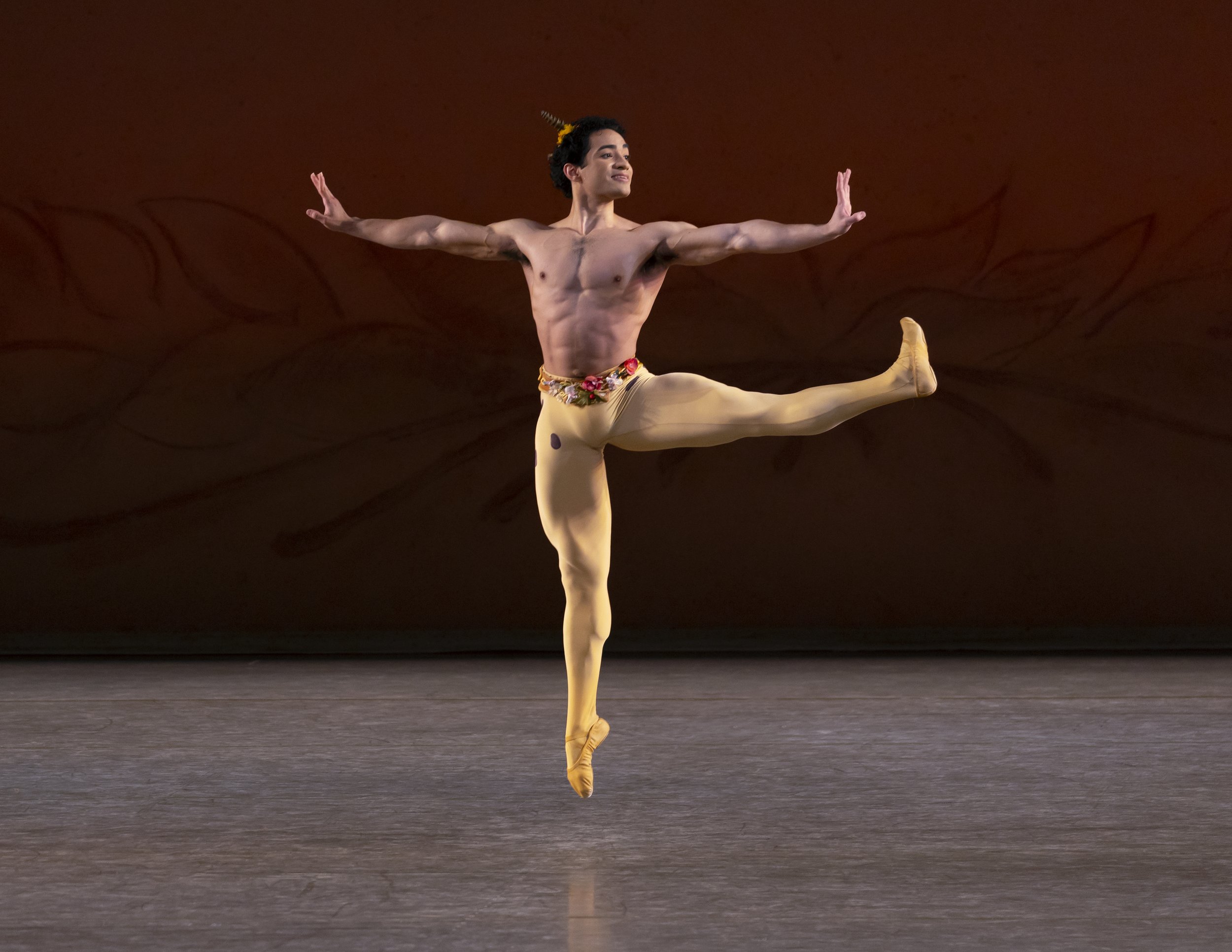NYC Ballet: Tribute to Robbins
Tiler Peck in Jerome Robbins’ The Four Seasons. Photo credit: Erin Baiano
January 30, 2024, saw the penultimate performance in the New York City Ballet’s “Tribute to Robbins” program. The program celebrates the enduring impact and legacy of Jerome Robbins upon the arts as well as being one of the founding choreographers of the company, being comprised of the ballets “Fancy Free,” “In the Night,” and “The Four Seasons.” These selections made for a captivating journey through some of the highlights of the legendary choreographer’s career. Leading the orchestra that evening was conductor Andrew Litton.
Kicking off the program with great vitality was “Fancy Free.” Premiering in April of 1944, this was the first ballet choreographed by Robbins at the age of 25, with his composer being none other than Leonard Bernstein. The work proved to be an instant success, not only for its inventive choreography, but for its ability to elevate a common scene from the streets of New York City into a thing of art; it would go on to serve as the basis for the musical “On the Town” which premiered later that year and has since become a cherished part of the musical theater canon.
The three sailors were played by Daniel Ulbricht, Joseph Gordon, and Sebastian Villarini-Velez filling in for Jovani Furlan. Their romp about the streets of the city carried with charm and vigor as they turned, tussled, and snapped into a variety of moves rich with a modern, gestural language. As the night settled, the lively drum beat and brass figures gave way to a more reflective air from the winds as the sailors flicked their gum wrappers to a rising flute motif. The entrance of the first passer-by, played by Mary Thomas MacKinnon, saw her instantly grab the sailors’ attention through the high knees and turns of her her strolling footwork before she’s dragged into their shenanigans. A game of keep-away quickly ensues with her purse, and while she’s able to rebuff them with some sharp, confrontational steps, and even kick one down as the others hold her aloft by the arms, she’s followed offstage as the other two sailors continue to vie for her company. MacKinnon handled this sense of struggle against the sailors well through her sassy movements and expressions, though having her a little closer to their group for her initial rebuff would have better sold the “back off” impression she delivers.
Alexa Maxwell and Joseph Gordon in Jerome Robbins' Fancy Free. Photo credit: Erin Baiano
The entrance of the next passer-by, played by Alexa Maxwell, allowed for a more romantic atmosphere as Gordon’s account of war-time exploits soon turned into a charming pas de deux which balanced the charge of their chemistry with their relation as strangers. This was finely established early on when her elegant lifts saw her turn into his embrace, before removing his arm with a smirk as she realized her position. This sense of distance was soon bridged as she either rolls along his back or is lifted to return into a seated position on one of his legs, as well as faster moves such as her supported cartwheel or spun toss onto a nearby barstool. For a work where comedy is at the forefront, this moment of affection made for a splendid reprieve before the remaining sailors and earlier woman bust back onto the scene.
As the three men fight over the two women, a series of competitive variations soon unfolds to break the chaos. The first, performed by Ulbricht, was introduced with an extended drumroll as he broke into a variety of agile splits, tumbles, and spins. His energy and comedic sense was supported by the balance which let him perform some moves while standing atop the bar after being given a shot by the bartender. His rotations were emphasized by his spinning arm as he downed another drink before a brief series of grand pirouettes closed out his solo.
The second variation, danced by Gordon, contrasted the earlier one through its more refined movements, with fluid turns that emphasized smoothness over energy, and swung arms and legs that accented the shifts in his swaggering line. The upshift from the meandering rhythm saw him employ a thrusting footwork which carried into his knees and hips, as well as some flexes to lend a macho flair as he glided over the stage towards some deft leaps as he turned over his thrown leg mid-air. This worked itself back into the earlier, soft mood as Gordon worked his way to the ground, resting his hand on his chin as a sort of bashful reverence to the women.
The last variation, performed by Velez, is inspired by a Latin danzón, and was originally performed by Robbins himself. The opening beats were taken up by casual snaps into different poses as Velez transitioned towards a swaying footwork which suggested an imaginary partner from the way his hands were positioned as if behind a woman’s shoulder and waist. The lighthearted delivery and blend of styles was finely navigated as Velez, split, spun and leapt his way throughout the diner, playing some quick beats on the tables and bar before leaping off to a neat close and great applause.
Naturally, the impromptu dance-off devolves into a fistfight as the sailors scare off their dates; the flailing legs from behind the bar being a touch which nicely retains the comedic aspect of their brawl. The dust settles quickly, and the sailor are alone to fall right back into their beginning antics and choreography, just before the entrance of the third passer-by, played by Malorie Lundgren, catches their collective eye. While her role is the briefest, Lundgren achieves the sense of allure necessary to set the sailors ablaze once more. Her dainty steps, turns, and high kicks, driven by the relaxed upper register of the keys, melted into brief pauses of consideration backed by the drawing violin, before she sauntered offstage with sailors not far in pursuit.
Next on the program was “In The Night,” which is set to four nocturnes by Chopin, played that evening by Elaine Chelton. Premiering in 1970, this ballet closely follows Robbins’ 1969 “Dances at a Gathering,” which explored different styles of Chopin’s music, and focuses almost entirely on the dancing, with little to no narrative as three couples express their varying forms of passion under the open, night sky.
Alec Knight and Olivia MacKinnon in Jerome Robbins’ In the Night. Photo credit: Erin Baiano
The first couple was portrayed by Olivia MacKinnon and Alec Knight. Dancing to “Nocturne in C Sharp minor, Op. 27, No. 1,” their pas de deux is said to suggest newer love as they entered the stage with backwards steps before a gentle lift and carry across the stage; their synchronization through their gliding feet or longer, flowing motions and floor-work spoke to the couple’s shared wavelength.
Their passion truly swelled during the allegro section, as their waltz-like step saw MacKinnon break into a series of rising turns and carries, with two poignant catches where she leaps straight up as if reaching one of the stars above, and circles back down to earth in his embrace. This section culminated in the two high lifts, seeing MacKinnon turn out after being lowered from each before the couple parted to opposite side of the stage as the music and their movements returned to the initial feel of the piece. Two gentle carries brought them back into their sync as their soft chaînés led into a joint reverence, shortly before she pivoted through her supported jeté to lay upon Knight’s shoulder as she’s borne offstage.
The second couple was played by Emilie Gerrity and Tyler Angle, dancing to “Nocturnes in F minor and E flat major, Op. 55, Nos. 1 and 2.” Their dance is said to convey familiar or long-standing love, a feeling that was established early on through the sync of their refined, courtly steps, as well as the returning link of their arms. While this couple's dance gives an impression of being less passionate when compared to the others, there is much to be seen and enjoyed about the way they are able to make difficult maneuvers seem effortless. For much of the choreography, their posture from the waist up rarely bends, highlighting moments of elegant lifts or sharply-executed dives. One instance of their unity was strongly felt when, after two deep, retreating bows she fell backwards into his arms, regaining her posture by stepping into the arc traced by her legs as he carried her over the floor. Their sense of control and comfort with one another let him position her in midair as if she were fixed on a single point, these lifts culminating as she dove into a stunning 180 degree hold before he slowly lowered her aright, in what was one of the highlights of the evening.
The final pas de deux was performed by Unity Phelan and Andrew Veyette, dancing to “Nocturne in E flat major, Op. 9, No. 2.” Said to represent a more tumultuous love, their time onstage was often full of passion as they mingled and parted with great emotion, featuring charged lifts as well as moments where their arms seem unable to link and their hands appear to repel. While Yvette made a more than able partner, the greater sense of care shown that night took a little away from the intensity of certain maneuvers, such as the spin while cradling her during one of the opening lifts, as well as a later instance where he swings her downward and back above his shoulders. Despite this, the two succeeded in portraying the highs and lows of love through their shifting features and expressions. One final parting sees Phelan approach his stoic, unflinching gaze from the other side of the stage before she uses his frame to lower herself to the floor and into a deep, vulnerable prostration before he lifts her into a triumphant arabesque that dispels any sense of doubt between the two lovers.
The work is closed out to the final nocturne, being a brief episode where the couples enter the stage and dance among themselves before they meet and acknowledge the others, only to be quickly drawn back into their respective, romantic worlds. Here, their shared motions at certain moments suggested that despite the different phases in each relationship, their foundations were the same.
Compared to the rowdy fun of 'Fancy Free' this work made a beautiful journey through a simple yet profound idea of love.
Last on the program was "The Four Seasons." Premiering in 1979, the work is set to excerpts from Verdi's "I Vespri Siciliani," "I Lombardi," and "Il Trovatore." Following a brief introduction where Janus, played by Samuel Melnikov, gathers and presents the personified seasons, played by McKenzie Bernardino Soares, Ava Sautter, Anna Snellgrove, and Maxwell Read. The winter section saw expression as the corps of women are blown about by the winds, played by David Gabriel and Andrez Zuniga, and into huddled groups before the entrance of the soloist Ashley Hod, whose brisk pointe-work and sharp motions conveyed her attempts to find shelter from the chill. After a pair of kicks that seem to knock the winds away, the rest of the women were free to join Hod in her snappy changements as the rest of the orchestra filled out the light theme introduced by the woodwinds.
Chun Wai Chan in Jerome Robbins’ The Four Seasons. Photo credit: Erin Baian
With Spring, soloists Sara Mearns and Chun Wai Chan displayed an ease of movement that spoke to the blossoming atmosphere, as seen from the more elegant turns when she is tossed following Mearn’s two attitudes early into the section. Their choreography had a greater sense of frolic as Mearns occasionally parted from Chan to dance among the corps, with her extended lifts and transferred jeté speaking to the warm, even whimsical ease that pervaded much of this section. Their closeness was seen from their ability to part and rejoin seamlessly for either an extended series of supported turns and deep bends, or setting her aloft among the corps. Their respective solos also allowed them time to shine individually, with Mearns' emphasizing elegant turns and lighthearted port de bras, and Chan's featuring a series of dexterous spins and leaps as he circled the stage. Their finale built to a splendid dive which saw Mearns turned about his back to land into an opposite-facing arabesque as they lowered into their reverent tableaux to close out the season.
Turning up the heat was Summer, featuring Emilie Gerrity and Adrian Danchig-Waring. They are introduced separately, flanked by the two trios of dancers whose sultry port de bras and almost constant, swaying posture finely evoked the shimmering air and heat of the season. After taking to different sides, their union is gradual as the two seem to dance around, and almost pass by, the other before coming together. Their chemistry was felt through their supported turns, as well as the ease with which Waring was able to transfer Gerrity onto the working leg of her arabesque and back again. Their brief solos led into a fluid dive where she pivots into a shoulder-sit, only to melt back towards to the ground into the closing tableaux.
Cainan Weber in Jerome Robbins’ The Four Seasons. Photo credit: Erin Baiano
Closing out the seasons was Fall, with soloists Tiler Peck and Andrew Veyette filling in for Roman Mejia. This section opened with some nimble kicks, leaps, and rolls from Cainan Weber's faun, whose presence and agility conjures up the pastoral atmosphere of the section before he brings forth the corps of revelers. As Peck and Veyette enter along their line of the corps, they soon displayed articulate, supported turns and lifts, with her often snapping into positions announced by the brief, orchestral tutti. Their respective solos carried with great elegance, with Veyette's closing out with a powerful series of grand pirouettes accented by his rising arms. As the sections builds, the rest of the seasons and their respective dancers soon pour onto the stage, taking the bacchanal to greater heights as the elements danced among each other before filtering back into neat groups for one grand tableaux to bring everything together.
The program had no shortage of dancing to be enjoyed that night, with the works forming a cohesive journey through the artistry of Jerome Robbins. With 'Fancy Free' elevating a scene plucked from the streets, 'The Four Seasons' bringing the heavenly down to earth, and 'In The Night' serving as a pure, balletic bridge between the two, the evening was one to be remembered.
- written by Logan Martell
